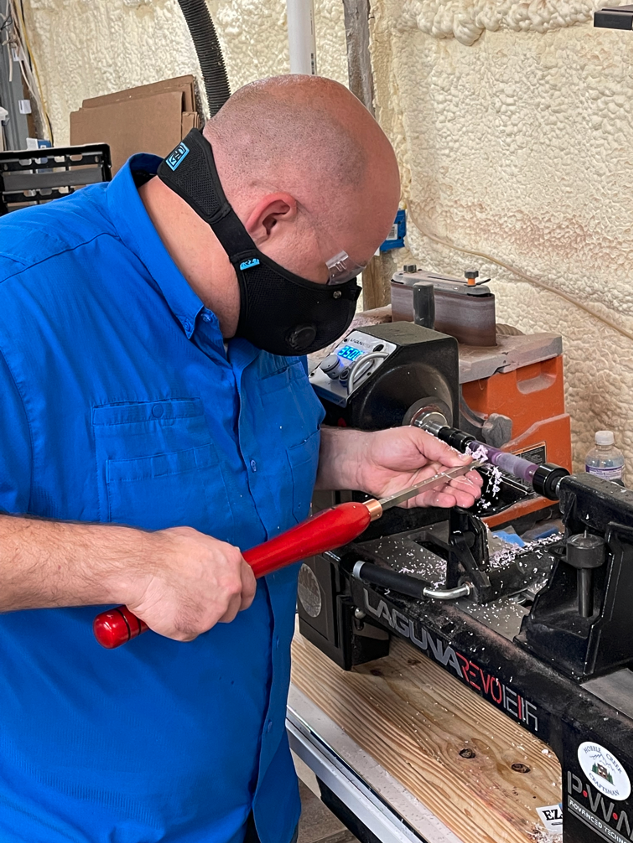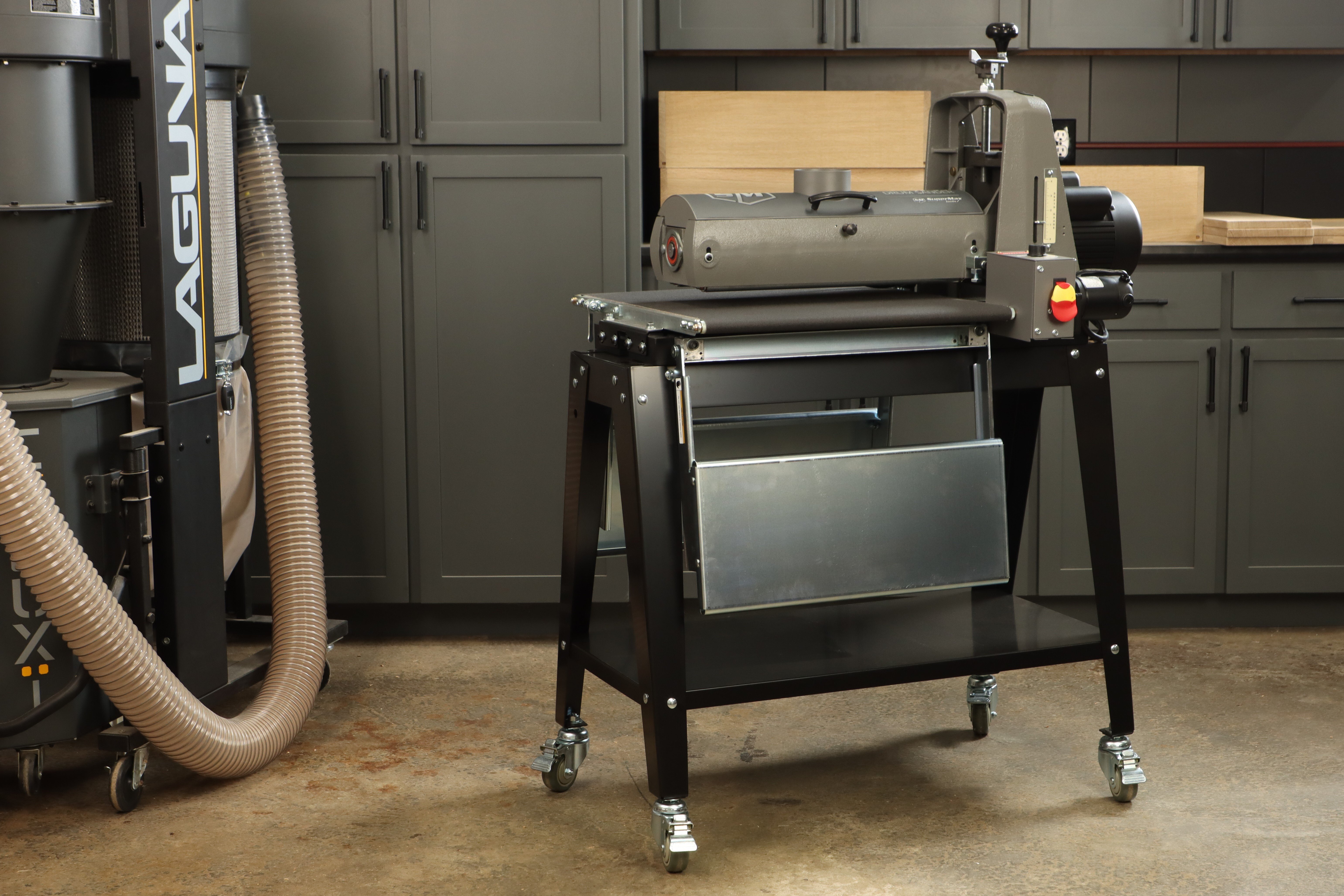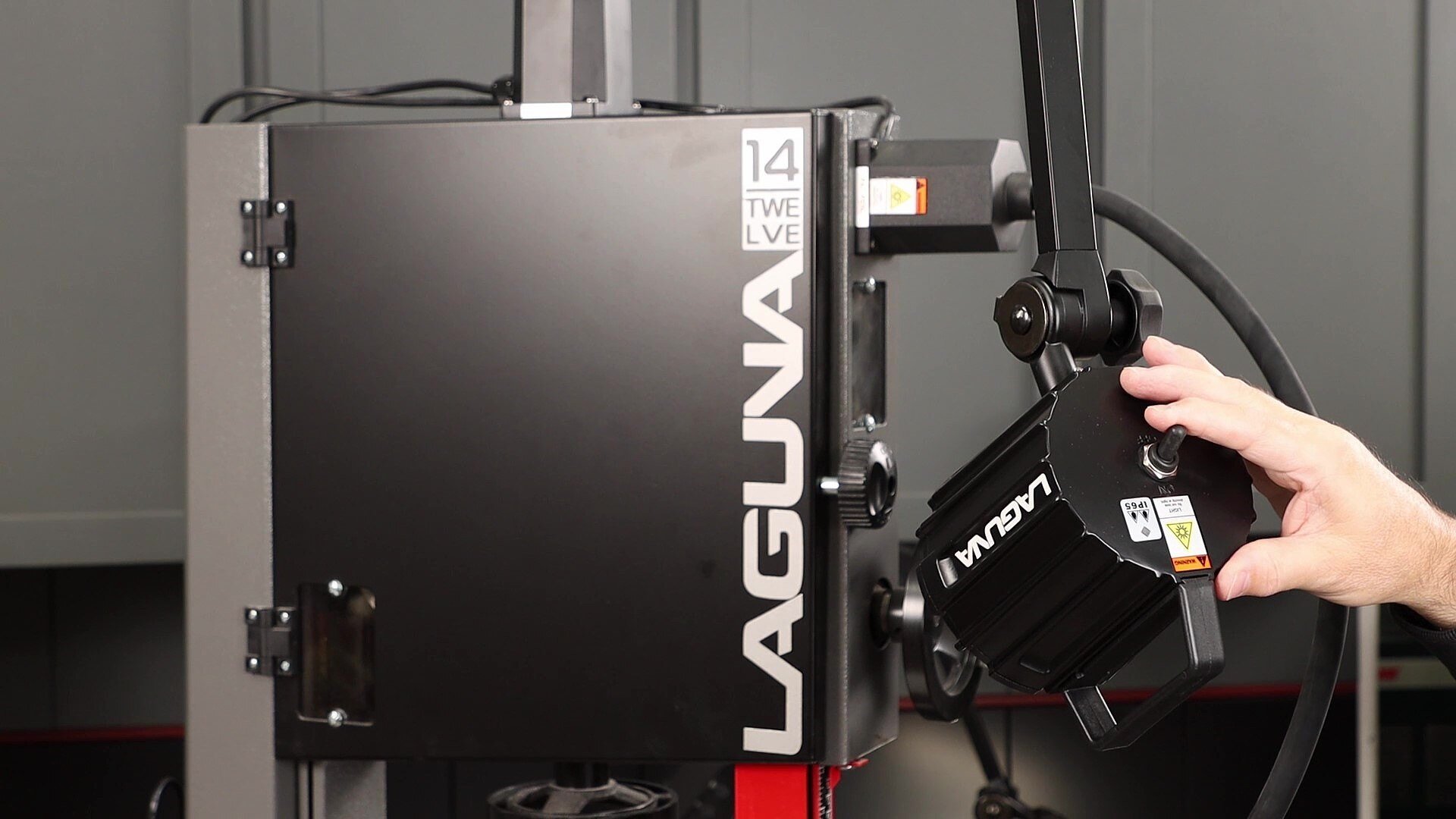Turning pens is a favorite pursuit of many craftsmen for a number of reasons:
- It can be quick. Once you have the basics down you can turn a simple pen in no time flat.
- It doesn’t have to be expensive. The material cost in a pen can be less than a cup of coffee.
- There’s no limit to what you can do. Start simple, then move to some fancy wood, try some resin, incorporate some unique hardware.
And nobody loves to turn pens more than Brandon Branch. Brandon is an active member of the ToolMetrix VetsTurn program for US combat veterans who has found a passion for pen turning, and he has developed a remarkable skill set for turning out stunning, artisan writing instruments. Brandon said “I’ve enjoyed turning as a natural extension to my other woodworking interests. While I find many different turning projects to be satisfying, pen turning has risen to the top and become my favorite.”
I asked Brandon if he had any tips for those of us who are interested in trying our hand at turning pens, and he offered up five gems:

- Use your lathe for drilling. Many people assume that a drill press is a core requirement to get into pen turning. There is another approach to prepping a blank that Brandon prefers, however, that involves using a four jaw chuck (which IS a core requirement for turning in my opinion) and a set of pen jaws. This allows you to use your lathe as a “drill press” by simply chucking up a drill bit in the tail stock and drilling the blank right on the lathe. This is a great quality enhancement as well as a time and space saver.

- Keep pen pieces aligned. When turning a two piece pen, draw a line on each piece where the grain lines up, then drill from the inside of the kit out. With this approach, if there’s any blowout on the back and has to be trimmed it will not affect how your grain lines up in the middle.

- Use an adjustable mandrel and mandrel saver when turning. A traditional fixed mandrel requires using spacers or settling for an imperfect fit. By using an adjustable mandrel you can adjust the length of the mandrel as well as the pressure that it applies, vastly reducing the chances of bowing/bending the mandrel and having uneven finish or chip out.

- Make your pen a personal expression. For your first couple pens you’ll want to focus on the basic mechanics of producing a pen After that, don’t be afraid of putting some extra flair or your own personal mark on the pen. Pens offer a great “canvas” for artistic expression. Given the low material cost and relatively short project time, it’s a low-risk opportunity to try out some ideas. Colored resins, creative hardware kits, dramatic dies, combine to form a well stocked arsenal of possibilities.

- Finishing. As you make your way through the sanding grits, stop the lathe and sand with the grain of the wood before moving on to the next grit. This will reduce the number of sanding rings around your pen and produce a silky surface. After sanding through 600 grit and applying your finish, go that little extra mile and run thru your wet micro mesh pads before polishing. This really makes a great difference especially if turning a larger pen.
As Brandon has found, pen turning is a relaxing, satisfying hobby or business opportunity. But be warned; it is highly addictive!
You can follow along with Brandon’s woodworking and woodturning adventures here: For more information on woodturning and the Revo 1216 lathe, check out the ToolMetrix YouTube channel.




